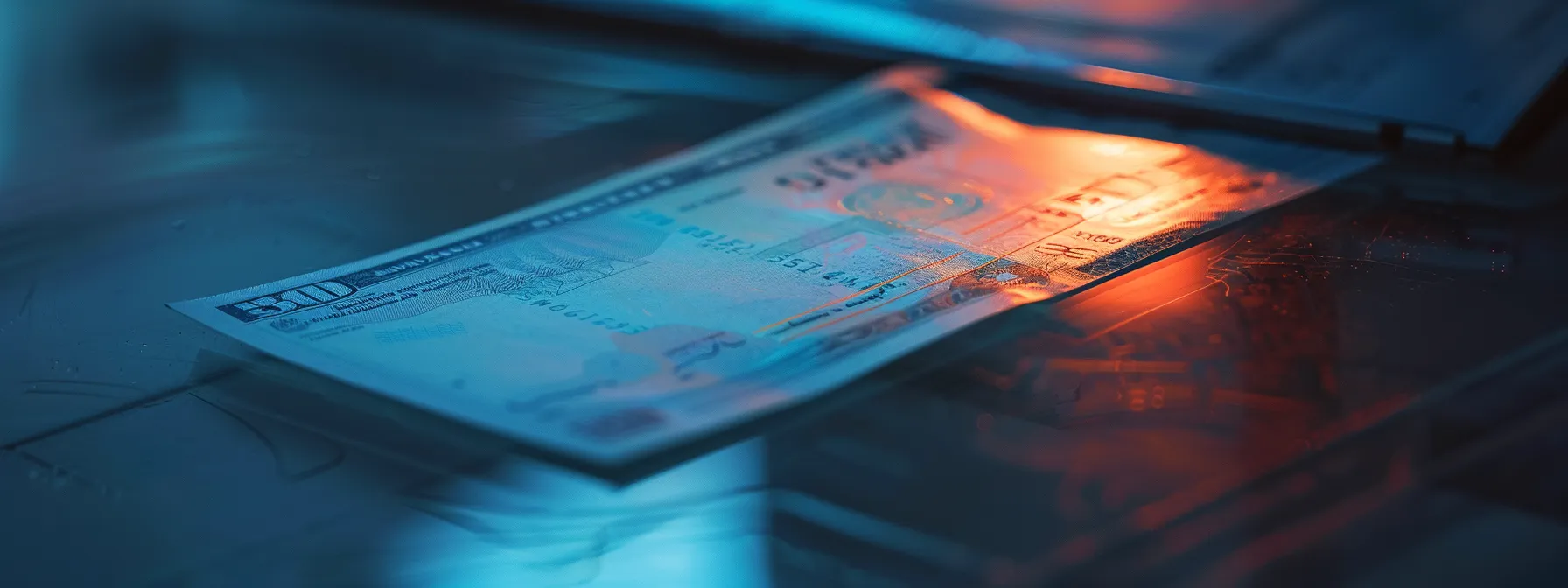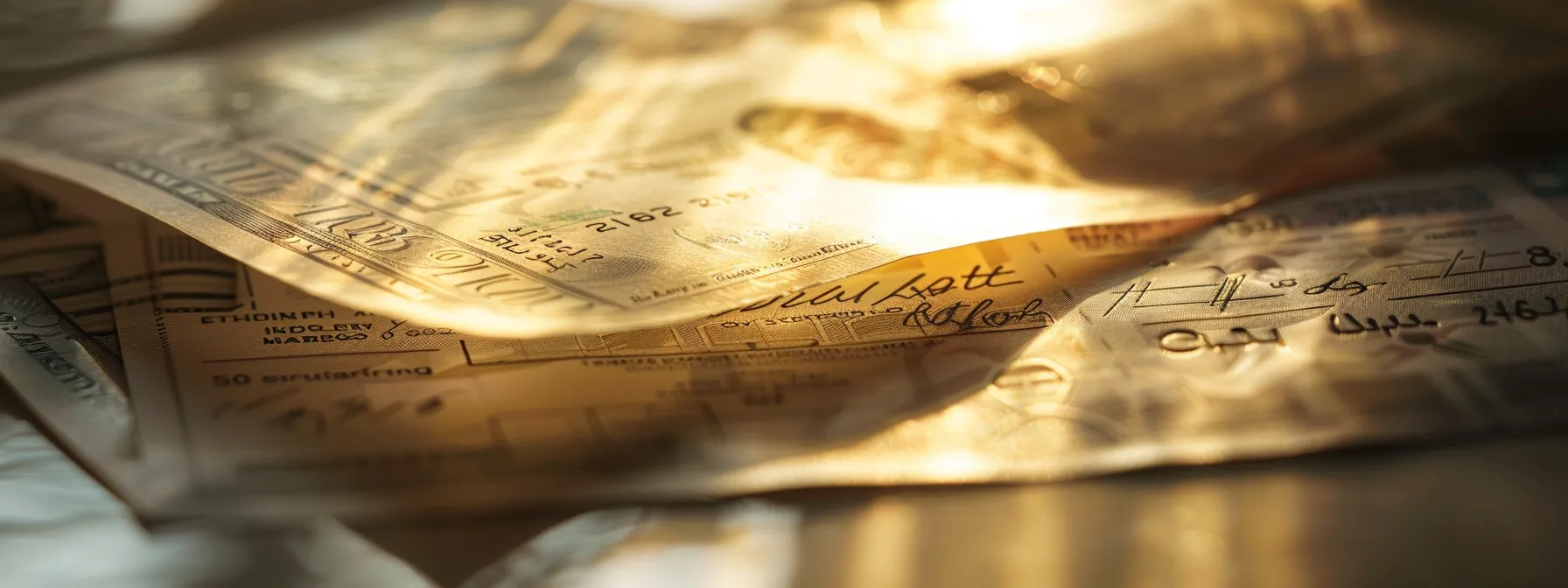When it comes to payments, many people wonder whether to use a money order or a cheque. Understanding the key differences between these two options can help you make better financial choices. This post will cover the security features, cost factors, and transaction speed of money orders versus cheques. By reading this content, you will learn how to protect your bank account from identity theft, choose the right method for vehicle purchases, and navigate situations that may require wire transfers. Whether you’re dealing with bills or personal transactions, finding the right payment method matters.
Money Order and Cheque: Key Differences Uncovered

A money order is a trusted instrument used for secure payments, often favored for transactions like mortgage payments, where cash is not practical. In contrast, a cheque is linked to a checking account, providing flexibility for personal and business expenses. Understanding these two payment methods reveals their distinct characteristics and helps individuals select the appropriate option for their needs.
What Defines a Money Order
A money order is a secure payment method purchased at various retail locations, such as convenience stores, banks, or post offices. Customers typically prefer money orders for significant transactions, as they eliminate the risks associated with carrying cash and are less susceptible to fraud than personal cheques or drafts. By providing assurance of funds, money orders protect both the sender and recipient, making them a reliable option for businesses and individuals alike.
Understanding the Characteristics of a Cheque
A cheque is a widely accepted payment method linked to an individual’s checking account, making it a convenient option for personal finance. Unlike money orders, which require upfront payment, cheques can be written for varying amounts, allowing individuals to manage their expenses flexibly. When using a cheque, it is essential to be mindful of potential fees associated with overdrafts, as insufficient funds can lead to charges from the bank.
Cheques also offer a layer of protection through indemnity, which can safeguard against loss or theft. This characteristic is crucial for individuals who prefer to avoid the risks that come with carrying cash or using a debit card. Additionally, the process of writing a cheque provides a clear record of payment, which can assist in tracking finances effectively and can be beneficial when reconciling accounts or handling disputes with a vendor or service provider.
Money orders and cheques each have their strengths, but security sets them apart. Let’s look at how they protect your money and keep your transactions safe.
Comparing the Security Features of Money Orders and Cheques

Fraud protection significantly varies between money orders and cheques. Money orders provide strong security features, reducing the risk of scams, while cheques offer a tracking mechanism that aids in monitoring transactions. Understanding these aspects helps individuals assess their options, whether using a certified check or opting for another payment method, ensuring safer financial dealings through reliable financial institutions.
How Fraud Protection Differs Between the Two
Fraud protection mechanisms differ significantly between money orders and cheques. Money orders typically come with built-in security features that reduce the risk of counterfeit activity, making them a safer choice for significant transactions. Institutions, such as credit unions, invest in advanced anti-fraud measures to protect their customers, ensuring a secure link to their savings account during the purchasing process. This added layer of security helps to establish a clear trail of the transaction, which is crucial for both senders and recipients.
On the other hand, while cheques offer a certain level of fraud protection through tracking capabilities, they can still be vulnerable to counterfeits. Cheques drawn from a checking or savings account might be altered or reproduced if proper precautions are not taken. Utilizing electronic payment platforms like Zelle can provide an alternative that reduces exposure to cheque fraud, creating a more secure environment for financial transactions. Understanding the nuances of fraud protection can guide individuals toward selecting the appropriate payment method for their needs.
The Role of Tracking in Money Orders and Cheques
The tracking capability of money orders and cheques plays a crucial role in enhancing security and accountability. Money orders often include features that allow for tracking the transaction, providing assurance against theft or fraudulent activity. This becomes particularly important for individuals making significant payments, such as landlords collecting rent, as it allows them to confirm receipt of funds without the risks associated with cash payments.
Cheques also offer tracking mechanisms, which create a detailed record of transactions that can be invaluable for managing finances. For businesses, this differs from cash payments by allowing for comprehensive warranty against disputes or lost payments. By having a traceable record, businesses can address issues with vendors effectively and maintain a transparent relationship with clients, reinforcing trust and security in their financial dealings.
Understanding security is vital, but the cost of each option warrants a closer look. As expenses can shape decisions, it’s time to weigh what you spend on obtaining these payment methods.
Evaluating the Cost Factors of Money Orders and Cheques

Initial purchase costs can vary when considering money orders and cheques. Money orders may incur a fee at the point of sale, while cheques generally come from a checking account without a direct transaction fee. Potential fees and charges, including those related to security deposits, credit checks, or down payments, can also influence overall expenses, making it essential for individuals to evaluate their options carefully.
Understanding these costs provides valuable insights into the financial implications of each payment method. This evaluation helps individuals make informed decisions about which option best suits their needs, ensuring they choose the most cost-effective solution for transactions.
Initial Purchase Costs
When considering the initial purchase costs, money orders typically involve a purchase fee that varies depending on the retailer. For instance, convenience stores or post offices might charge a small fee, which can range from a couple of dollars to around ten, depending on the amount of the money order. This upfront cost can be a crucial factor for consumers, particularly when they need to make frequent transactions.
In contrast, cheques do not usually incur a direct transaction fee when drawn against a checking account, making them more economical for individuals or businesses that require regular payments. However, some banking institutions may impose fees for maintaining an account or for overdrafts, which can affect the overall cost of using cheques. Understanding these costs associated with both payment methods allows users to choose the most financially viable option for their specific needs.
Potential Fees and Charges
When evaluating potential fees and charges associated with money orders, customers often encounter varying costs that depend on the issuer. Retailers, such as convenience stores and post offices, typically charge a fee for issuing a money order, which can range from a few dollars to around ten. Understanding these expenses is vital for individuals who frequently use money orders for significant transactions, as the cumulative costs can add up over time.
In contrast, individuals who utilize cheques may avoid direct transaction fees when drawing from a checking account. However, banks might impose fees for maintaining accounts, overdrafts, or additional services. For small and medium-sized business owners, it is essential to consider these potential charges, as they can influence overall expense management and impact cash flow when deciding between using cheques or money orders for their financial transactions.
The cost of money orders and cheques is only part of the picture. Next, attention turns to how quickly these options can complete transactions, revealing their true value in everyday use.
Analyzing the Speed of Transactions With Money Orders and Cheques

Processing times for money orders and cheques vary significantly, impacting how quickly payments can be delivered. Money orders are generally processed and available for use immediately after purchase, while cheques may take longer to clear, depending on the bank’s policies. Examining these factors helps individuals and businesses determine the most efficient payment option for their needs.
Additionally, understanding how each payment method affects delivery times will assist users in managing cash flow effectively and ensuring timely transactions. This analysis enables informed decisions for both personal and business financial activities.
Processing Times for Each Payment Method
Processing times for money orders are typically immediate, allowing customers to use their funds right after purchase. This immediate availability is beneficial for individuals needing to make urgent payments or businesses requiring quick transactions. By eliminating the waiting period associated with other payment methods, money orders serve as an effective tool for handling pressing financial obligations.
In contrast, cheque processing times can vary depending on the bank’s policies and the amount involved. Cheques may take several business days to clear, leading to potential delays in fund availability for the recipient. Understanding these differences in processing times helps individuals and businesses choose the most suitable payment method based on their urgency and financial needs.
Impact on Payment Delivery
The impact on payment delivery varies significantly between money orders and cheques, which can influence the choice of payment method. Money orders allow individuals to make immediate payments since they become available for use right after purchase. This feature is especially advantageous for urgent transactions, where delays might lead to penalties or missed obligations.
In contrast, cheques often require several business days to clear, during which the payee may not have access to the funds. This delay can create complications for individuals and businesses, particularly when immediate cash flow is required. Understanding these differences in payment delivery speed helps users make informed decisions tailored to their financial needs.
Transactions move swiftly, but speed alone does not define value. Next, it’s important to consider how widely accepted these options truly are in everyday life.
Recognizing the Acceptability of Money Orders and Cheques

Money orders and cheques have specific acceptance criteria that vary depending on the venue. Understanding where each payment method can be utilized is vital, as some businesses prefer one over the other. The following sections will highlight the locations that commonly accept money orders and cheques, as well as the limitations that users may encounter when attempting to use them for transactions.
Where You Can Use Each Payment Method
Money orders are widely accepted at various locations, including retail stores, banks, and post offices, making them a versatile option for secure payments. Many people prefer to use money orders for transactions such as rent payments or large purchases, where cash might not be suitable. This payment method ensures that funds are guaranteed, providing peace of mind to both parties involved.
In contrast, cheques are typically accepted by businesses and vendors that offer services or goods, allowing individuals to pay for regular expenses like utilities or groceries. While many large establishments honor cheques, some may require clients to meet certain conditions, such as having an account with their institution. Understanding where to use each payment method assists consumers and businesses in making appropriate choices for their financial transactions.
Limitations in Acceptance Across Different Venues
When it comes to acceptance, money orders and cheques face distinct limitations based on varying venues. While money orders are often recognized in retail locations and service providers, some businesses may still prefer traditional payment methods like cash or credit cards, especially for smaller transactions. This can be inconvenient for individuals relying on money orders for essential payments, such as rent or bill settlements, where immediate acceptance is necessary.
On the other hand, cheques may have restrictions in certain situations, particularly at smaller businesses or vendors that do not offer direct banking services. Some establishments require clients to have an account with them to process cheques, which can limit accessibility for customers who do not meet these criteria. This limitation may lead individuals to consider alternative payment methods, ensuring they can meet their financial obligations without delays or complications.
It’s time to weigh your options. Deciding between a money order and a cheque can shape your payment experience significantly.
Choosing Between a Money Order and a Cheque for Your Payment Needs

When deciding between a money order and a cheque, various factors based on an individual’s financial situation come into play. Money orders are often chosen for their secure nature in significant transactions, while cheques provide flexibility for everyday payments. Understanding common use cases for each option assists individuals and businesses in selecting the most appropriate payment method for their needs.
Factors to Consider Based on Your Financial Situation
When assessing whether to use a money order or a cheque, individuals should evaluate their specific financial situation. For those making large, one-time payments, such as a rental deposit or significant purchase, a money order may provide the security needed, ensuring that funds are guaranteed at the time of transaction. Conversely, for regular, everyday expenses like bills or groceries, a cheque offers the flexibility to pay varying amounts based on current financial availability.
Additionally, the urgency of payment can influence the choice between these two options. Money orders are often processed immediately and can be beneficial for urgent payments, ensuring timely delivery without delays. In contrast, individuals managing cash flow might prefer cheques for their convenience, especially when transactions can be scheduled as required. Understanding these factors allows individuals and businesses to make informed decisions that align with their financial management strategies.
Common Use Cases for Each Payment Option
Money orders are frequently used for substantial transactions that require a guaranteed form of payment, such as rental deposits or large purchases. The prepaid nature of money orders makes them ideal for individuals who want to ensure that the funds are available at the time of the transaction, reducing the risk of bounced payments. Businesses may also opt for money orders when dealing with customers who do not have checking accounts, as this method secures the payment in advance.
Cheques, on the other hand, serve well for everyday payments like utility bills and groceries, where flexibility is vital. They allow individuals to write different amounts and manage their finances without the necessity of upfront payment, which can be beneficial for ongoing expenses. Additionally, businesses often prefer cheques for vendor payments, as they provide a reliable record of transactions and can facilitate easier bookkeeping processes, catering to both personal and organizational financial needs effectively.

